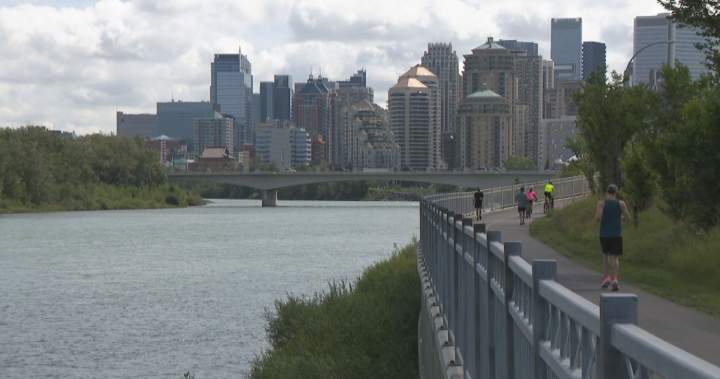The shadow of industrial history continues to loom over Calgary’s West End as city officials confirm there are no immediate plans to address decades-old creosote contamination beneath the neighborhood. This decision comes despite growing concern from residents and environmental advocates who worry about potential long-term health impacts from the toxic wood preservative that has lingered in the soil since the closure of a treatment plant nearly 60 years ago.
“We’re monitoring the situation, but currently there is no active remediation strategy for the West End area,” explained Sarah Martinez, Calgary’s environmental assessment coordinator, during Monday’s city council meeting. “Our priority remains ensuring public safety while we evaluate the most effective approach to this complex contamination scenario.”
The West End contamination stems from a Canada Creosote wood treatment facility that operated along the Bow River from 1924 to 1962. For decades, the plant used creosote—a mixture of hundreds of chemicals known to include carcinogens—to preserve railway ties and utility poles. Following the plant’s closure, the toxic legacy remained buried beneath what would later become a vibrant residential and commercial district.
Health Canada classifies creosote as a “probable human carcinogen,” with potential links to skin, respiratory, and digestive system cancers through prolonged exposure. The contamination zone extends across portions of Eau Claire, West Downtown, and sections along the Bow River pathway system—areas now home to thousands of Calgarians.
This isn’t the first time Calgary has confronted its creosote problem. In 2018, the provincial government allocated $45 million toward addressing contamination on the eastern edge of the affected zone, including remediation near the Calgary Flames’ planned arena development. However, the broader West End zone has remained largely unaddressed.
Environmental engineer Dr. Eliza Thornton from the University of Calgary notes that while immediate health risks appear minimal due to the depth of contamination, questions remain about long-term exposure patterns. “Without comprehensive testing and remediation, we’re essentially conducting an unintentional multi-generational health study on West End residents,” she told CO24 News.
The city’s current stance relies on a containment rather than removal strategy. Officials maintain that most contamination sits below the water table and beneath several meters of clean fill, creating what they describe as a natural barrier between residents and toxins. Regular groundwater monitoring shows the contamination plume isn’t actively spreading, according to city documents.
Residents like Marcus Hendricks, who has lived in the West End for over a decade, express frustration at the lack of action. “Every few years this issue surfaces, there’s talk about the problem, then it disappears from public conversation again,” Hendricks said. “Meanwhile, we’re raising families here with this invisible threat potentially beneath our feet.”
The financial reality of full remediation presents a significant hurdle. Environmental assessment specialists estimate complete cleanup could cost upwards of $300 million—funds the city says aren’t currently available given competing infrastructure priorities. Provincial and federal funding would likely be necessary for any large-scale remediation effort.
The situation highlights a growing challenge for Canadian cities grappling with industrial contamination legacies as urban development expands into formerly industrial zones. Similar scenarios have played out in Hamilton, Ontario and Saint John, New Brunswick, where creosote facilities once operated.
As Calgary continues to develop its riverfront areas and downtown core, the question becomes increasingly urgent: at what point does the potential health cost of inaction outweigh the financial cost of remediation for a contamination issue that has already persisted for more than half a century?
























